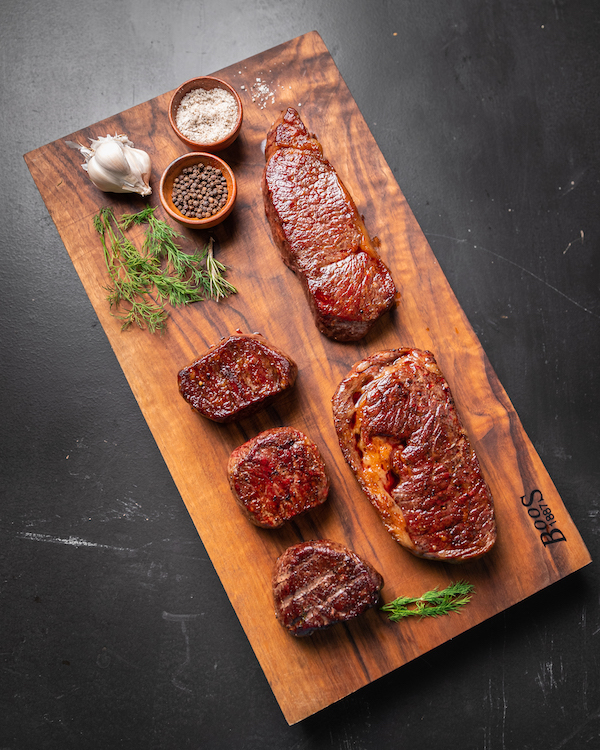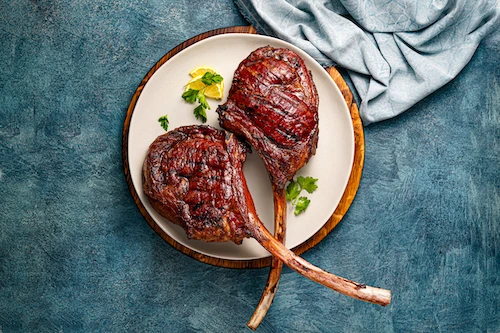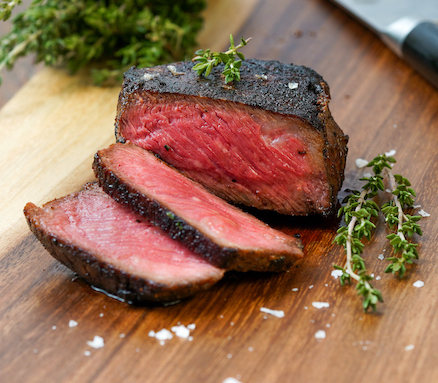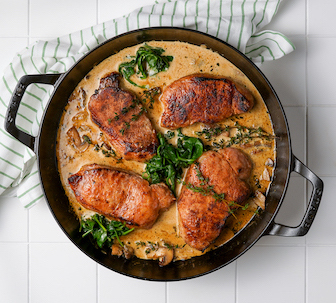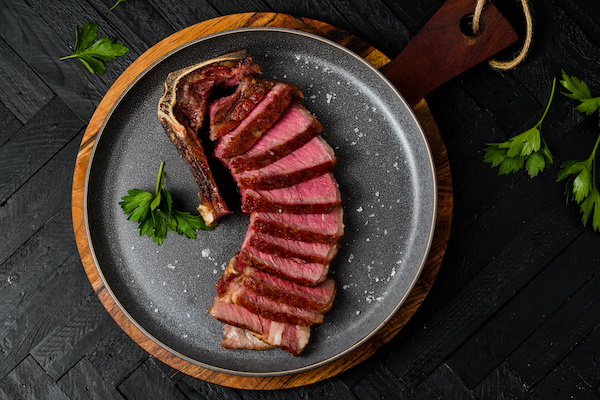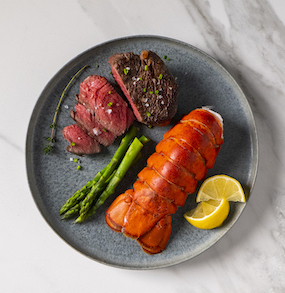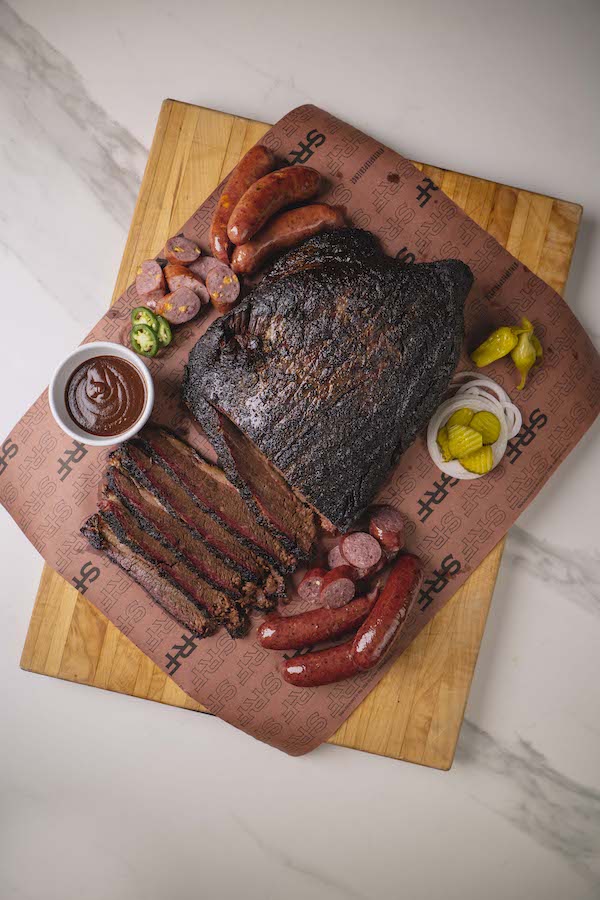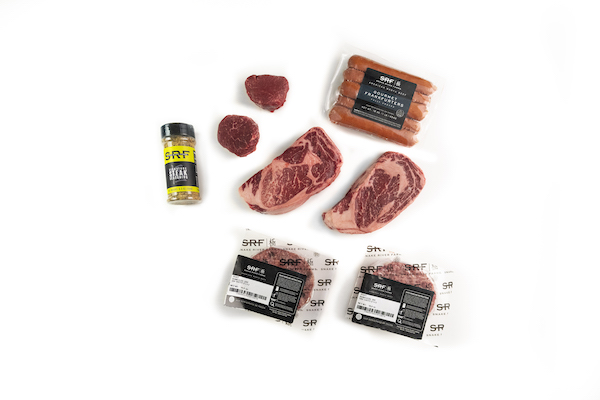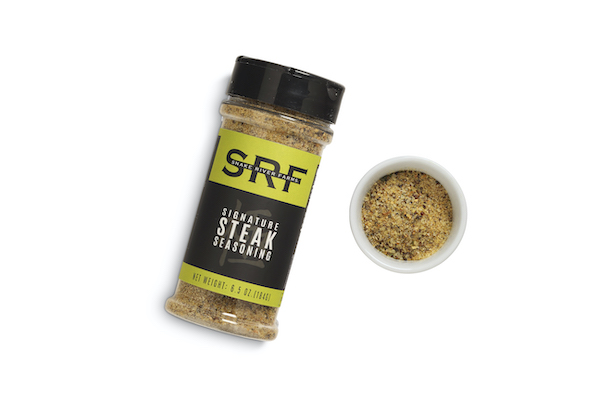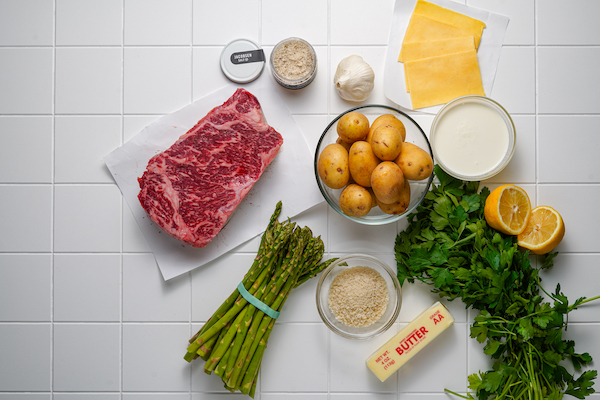What is Sous Vide Cooking?
Heard of sous vide cooking? Not sure what it is? This article will demystify the name and break down the elements of this foolproof method for perfectly preparing a wide range of our products.
Steak is one of the easiest foods to cook using the sous vide method. Preparing a steak on the grill or seared in a skillet is not difficult, but these conventional methods leave room for mistakes and can lead to an undercooked (or worse!) an overcooked steak.
Other large items, like a prime rib or ham, are also good candidate for the sous vide method. This is also an excellent way to prepare these items when there’s not enough time to gently thaw them in the refrigerator.
Sous vide takes out all the variables and ensures your steak, prime rib or ham is cooked to perfection. All you need is an immersion circulator, some sealable freezer bags and a heatproof container.
Filling in the Void
Sous vide translates from French as “under the void” or “in a vacuum.” The translation makes sense when you realize that the first step in the cooking method is to seal your meat in an airtight container.
If you have a food sealer at home, it’s a great way to prepare your steak for the sous vide method. Zip-seal type freezer bags also work well for this purpose. It is possible to use Snake River Farms products if the seal is tight and there are no leaks. If there is even a small hole, this method will not work. Completely thaw your steak and see if it is sealed tight. If not, use one of the other methods.
For hams and roasts, the packaging is more robust. Unless there is an obvious hole or imperfection, most of the time they can be prepared using the original packaging.
Keeping it Low-Key
The second element of sous vide is water. Your airtight package of meat goes into a water bath that is set to a very precise temperature. Any slow cooking method helps keep meat juicier and more tender, but sous vide takes that ideology to the extreme.
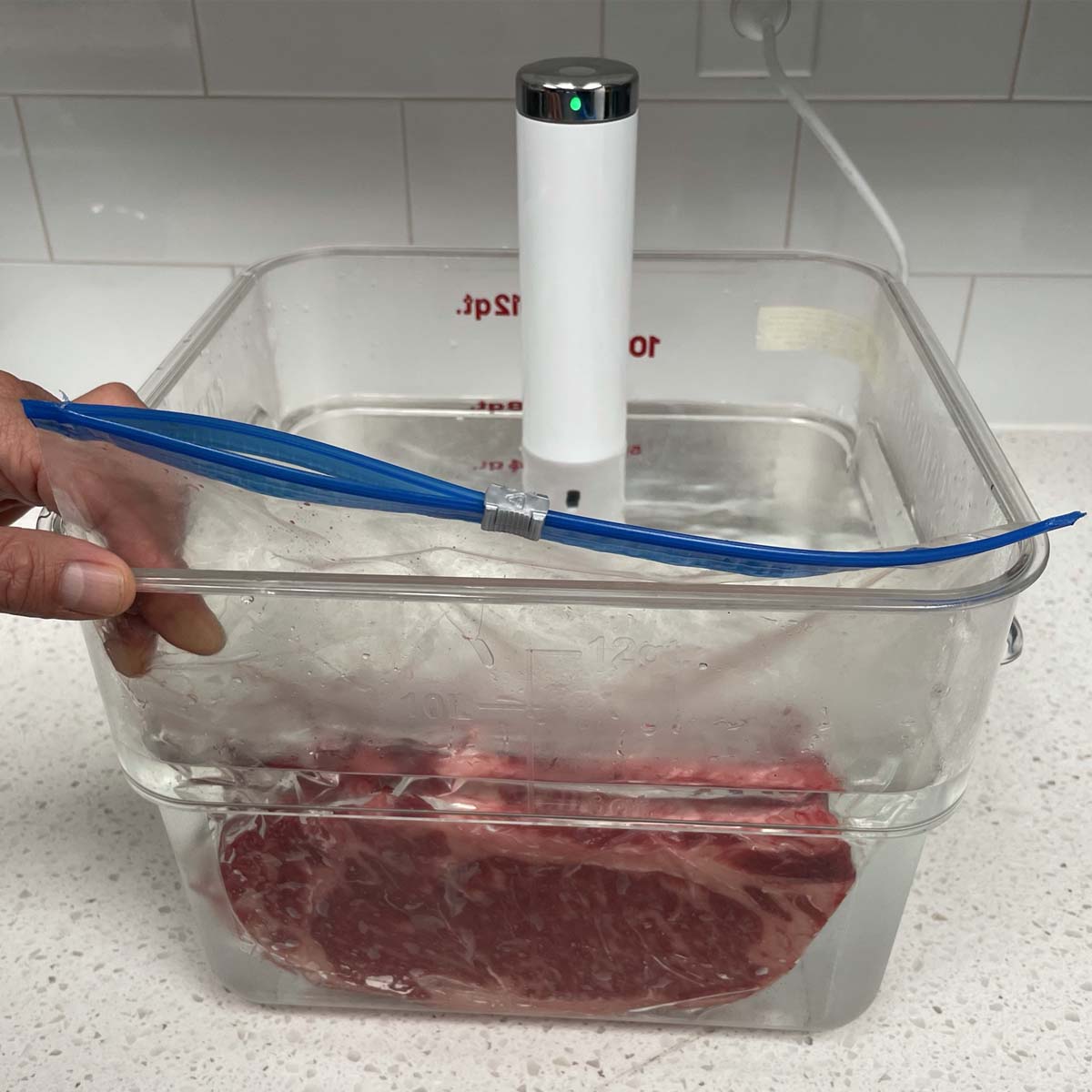
It takes a little longer to sous vide your steak, like an American Wagyu New York strip steak, to reach its ideal internal temp — but the upside is that you simply cannot overcook meat with this method. The water never boils or exceeds the target temp, and the meat never comes into direct contact with the water or a hot surface. That translates to lowkey peace of mind.
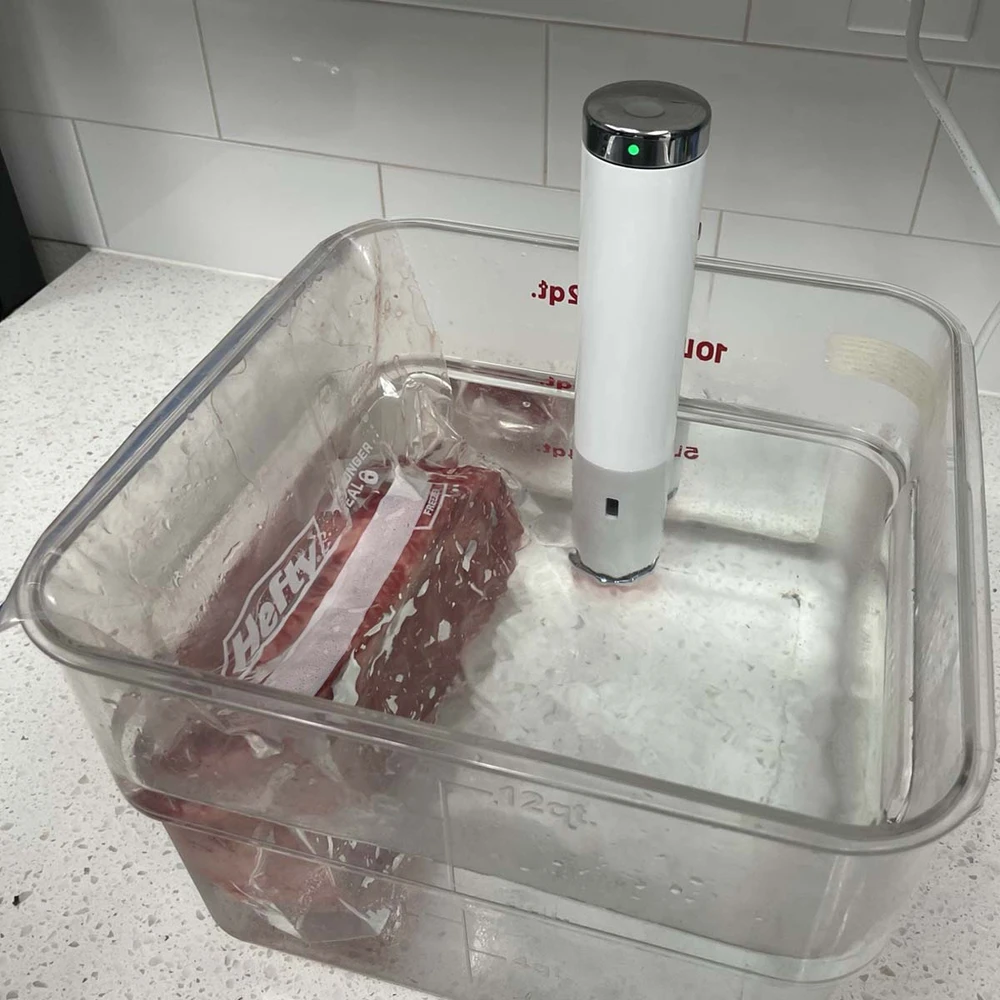
Circulating for Consistency
Sous vide’s third component is circulation. By keeping the water constantly moving, you avoid hot or cold spots that can negatively affect the process. Think of your sous vide setup as a kind of gentle jacuzzi. Water reaches your ideal temp slowly, then circulates continuously, allowing your protein to achieve perfect prepared status from edge to edge. That means zero raw spots or dried out ends, even for a large cut like a prime rib or SRF American Wagyu cowboy steak. This also means all those flavorful juices stay inside the muscle and you don’t lose any volume while cooking sous vide. Traditional methods rack up losses from evaporation.
Finishing with a Sizzle
Of course, without exposure to direct heat, meat cooked via sous vide lacks the distinctive browning that results from the Maillard reaction. Translation: It’ll look rather gray when you remove it from the sous vide bath. The simple solution is the fourth step in the process. A quick seer in a piping hot cast iron pan, grill or oven elicits that crispy, caramelized, charred exterior everyone wants on their plate. Savvy chefs understand that this makes sous vide a fancy variation of the reverse seer method.
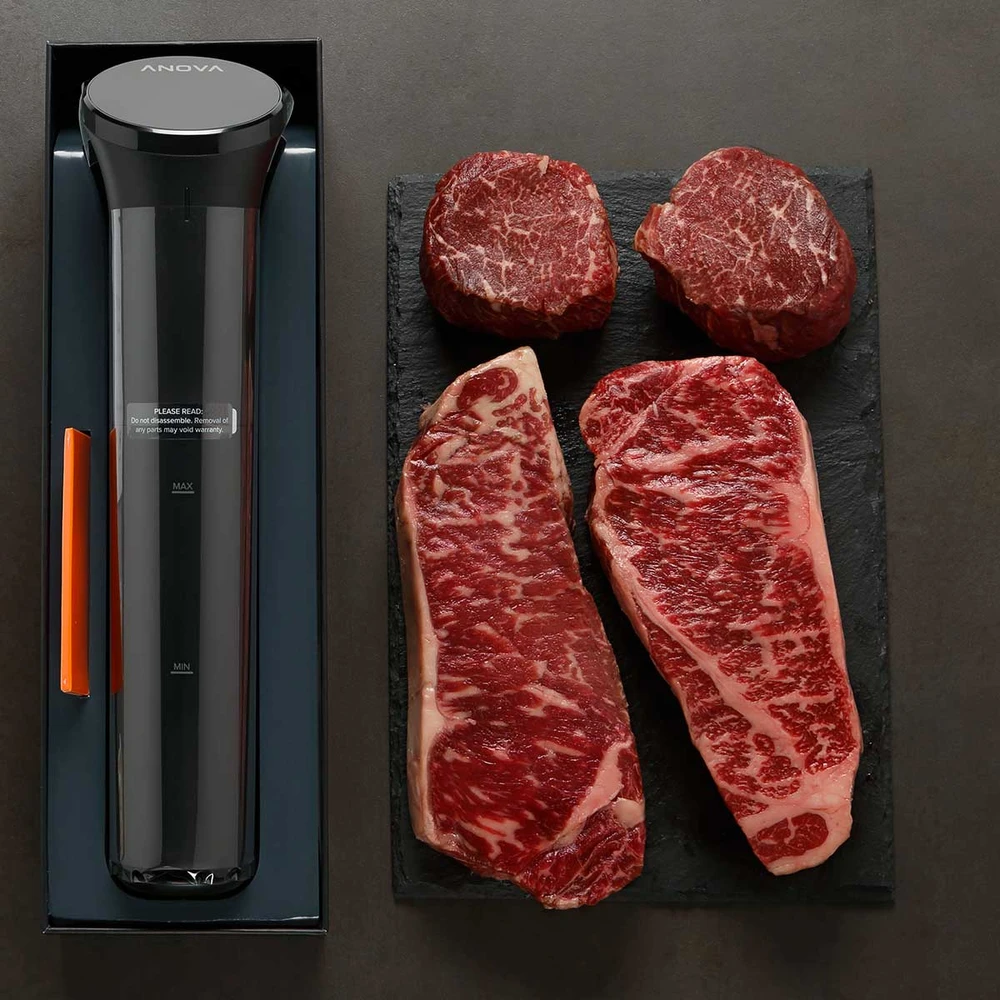
Saving Time and Money
High-end restaurants have long been denizens of sous vide cooking. Is it worth investing in the equipment required for employing this method at home? Yes! There are options out there starting around $100, as well as lots of online hacks for cobbling together DIY sous vide cookers. Beware that properly airtight packaging is vital for avoiding contamination — and that food safety becomes an issue if you leave your meat in a slow-cooking environment for long periods of time.


